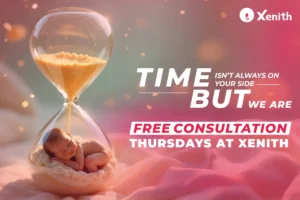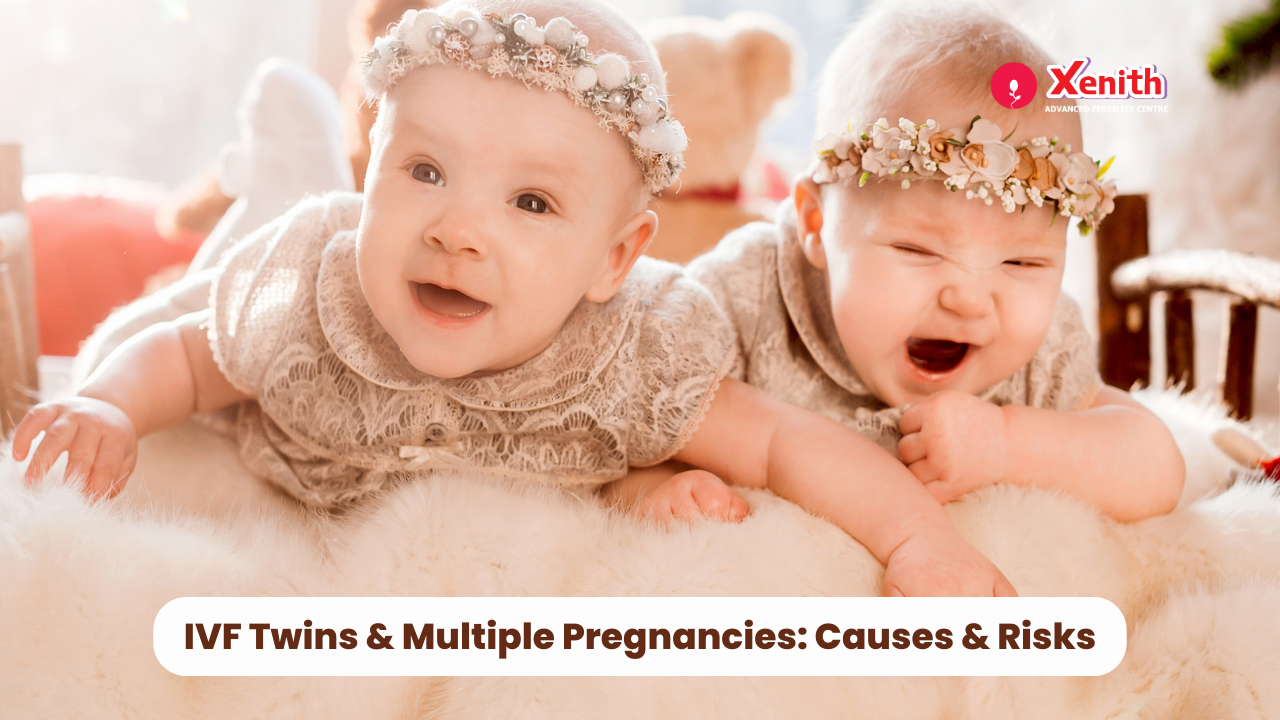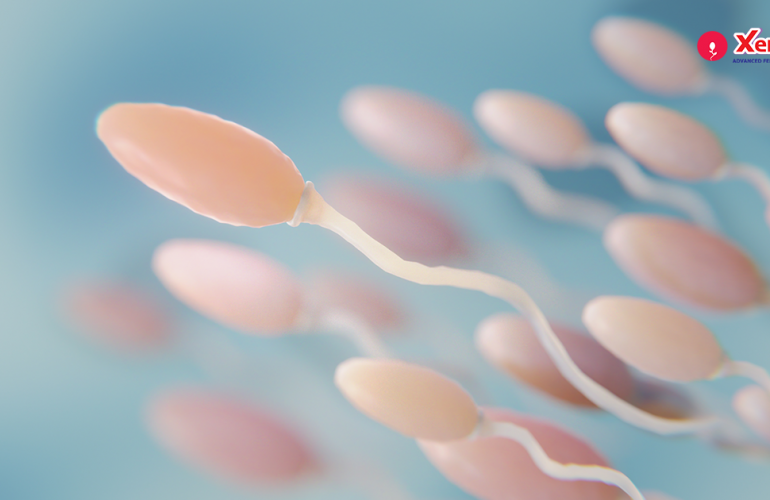When conception has not occurred after 1 year of having regular, unprotected sex, which is defined as infertility, then people approach for treatment and some of them also need assisted reproductive technologies like in vitro fertilization (IVF) for helping them to have a child. IVF is a series of procedures where the woman’s ovaries are stimulated to produce more than one egg and these eggs are retrieved, combined with sperm in a laboratory setting and the resulting embryo is transferred back to the woman’s uterus for implantation potentially leading to a successful pregnancy.
The role of embryo transfer

Free Thursday Consultation
Going through IVF could increase your chances of having twins or multiples because sometimes more than one embryo is transferred to the uterus to increase the chance of conception with the hopes that at least one will survive to full term. However, if all the embryos survive, it could lead to twins or multiples. Nowadays, the conception of multiples is getting less common due to improved technology and the healthiest embryo is selected and transferred into the uterus. This transfer of only 1 healthy embryo into the uterus is called elective single embryo transfer (eSET). eSET should be considered for patients who have a good likelihood of getting pregnant with IVF which is usually women younger than 35 and who produce good quality embryos.
There are different types of embryo transfer. In fresh embryo transfer, the eggs that have just been fertilized in the lab are cultured for a few days and the best embryos are transferred back into the woman’s uterus with the remaining good embryos being frozen. In frozen embryo transfer, the frozen embryos are thawed and transferred to the woman’s uterus. The success rates of both frozen and fresh embryos are almost similar, with frozen embryo transfer giving slightly better pregnancy rates. . The embryo can be transferred to the uterus at two different times of the embryo growth which are the cleavage stage and blastocyst stage. Cleavage stage embryo transfer occurs 2 to3 days after fertilization occurs. A blastocyst is a cluster of dividing cells about 5 to 6 days after fertilization by sperm and can be transferred at this time. This gives more time for the embryo to develop in the lab and also gives time for the embryologist to grade the embryo and pick the healthiest ones to implant. The embryo could also be tested for any genetic defects at this time. The uterus also has to be the proper thickness so that it is receptive to the embryo and this timing or implantation window is when the embryo needs to be introduced into the uterus.
Factors affecting multiple pregnancies
Some reasons for transferring multiple embryos into the uterus include being older (more than 35 years old), fewer embryos were produced, lower quality embryos produced, having had repeated IVF failures, the patient’s health, and following the country’s regulations and guidelines. An educated decision is made by the patient after consulting with the doctor and following the doctor’s recommendations.
Risk of IVF Twins and Multiple Pregnancies:
Having twins or multiples may seem ideal to couples dealing with infertility where you get 2 babies for the price of one IVF procedure. But delivering twins or multiples comes with its own risks to both baby and mother. There is a higher risk of the baby being born prematurely and this could lead to a number of health complications to both babies and mother. Babies could be born with low birth weight, respiratory issues, cerebral palsy, other health problems and delays in development. Mothers might have higher risk of getting gestational diabetes(diabetes that develops during pregnancy causing larger sized babies and other complications), anemia, haemorrhage (severe bleeding) after delivery due to more stress on the uterus, hypertension(high blood pressure) and preeclampsia (high blood pressure, general swelling, increased protein in urine and possible kidney damage or damage in other organs). There is also higher risk of miscarriage and stillbirth. So, both mother and baby have to be monitored closely before and after birth. They are also more likely to have a caesarean section delivery. Twin to twin transfusion syndrome could occur if the twins share a placenta where one twin receives more supply of blood than the other causing more growth in one fetus with higher blood supply and could lead to death of the undersupplied fetus. It could also lead to abnormal growth and heart problems during development. A twin pregnancy could go all well also, however the risks are higher compared to a singleton pregnancy.
Personalised Decision-Making:
You would need to discuss with a fertility expert the pros and cons of having twins or multiples and make an educated decision after learning about the risks and dangers of going through with this. A counsellor could help you make a decision that’s best suited uniquely for you. The couples age, previous reproductive history, health issues, and other factors would need to be taken into consideration before making a decision on the number of embryos to be transferred to the uterus for conception to occur.
IVF Technique Advances:
Many technological advances have been made in IVF to improve the chances of conception and decrease the need for multiple embryo transfers. Some of them include:
- Embryoscope- is an incubator with a camera that monitors the growth of the fertilized egg and takes images at regular intervals. It allows the embryologist to keep track of the embryo without having to disturb its growth and bring it out to analyse it compromising its viability. It could also mimic the same conditions as the fallopian tube. The time lapse feature allows the embryologist to select the ones that are growing well and seem healthier for improved chance of conception. However many studies have shown that use of Embryoscope does not necessarily increase clinical pregnancy rates.
- Embryo vitrification- is a process of flash freezing the embryo for later use and its outcome is very similar to using fresh embryo.
- Preimplantation Genetic Testing-is used to identify genetically abnormal embryos and thus helps in selecting the healthiest embryos for transfer. It is an important tool for people who are at greater risk of having babies with some genetic disorders like if a certain genetic risk runs in your family or if you are older or have had multiple failed IVF cycles.
- Laser assisted hatching- is used to help in implantation of the embryo to the uterus by using laser to make a small crack in the outer shell of the embryo to aid in attaching to the uterus. It was found that embryos of women older than 35, frozen embryos, or other unknown reasons have a harder outer shell making it difficult for the embryo to implant. It has to be done very precisely without affecting the contents inside the embryo.
- Blastocyst culture-In the past, 2 or 3 day embryos were usually transferred to the uterus but now due to better technology, one can culture a 5 or 6 day blastocyst and only the healthy ones survive up to this period. With blastocyst culture, only one healthy blastocyst will need to be transferred to the uterus to prevent multiple pregnancies. But not all labs have the capability of growing blastocysts and also there is a chance that none of the embryos may develop into blastocysts in the lab environment. So it might be easier to transfer day 3 embryos and the doctor might need to decide whether to choose a 3 day or 5 day embryo.
Conclusion
Many infertile couples have been granted the gift of becoming parents due to IVF. However, multiple pregnancies can be risky. So, the patients need to be educated on the pros and cons of going through multiple embryo transfers and the decision has to be made together with the doctor as to what would be best for their unique circumstances. The goal is to have a healthy pregnancy and a healthy baby and mother. If you are interested in how to go about successfully and safely having a child, come talk to the experts at Xenith Advanced Fertility Centre.
Frequently Asked Questions (FAQs)
1)Is eSET less risky than transferring multiple embryos?
Elective single embryo transfer (eSET) selects the healthiest embryo of the lot and has very good chance of successful conception with a single fetus especially if you are young and healthy. Transferring multiple embryos could lead to twins or multiples which is more risky for the health of both mother and babies.
2)Can I choose to have twins when going through IVF? It is important to discuss with your fertility specialist about your wishes because it could be risky depending on your age and your health. Having twins is also more risky to the health of both the mother and the babies. Thus, it would have to be monitored very closely by the doctor.




